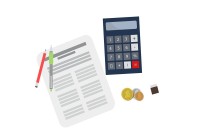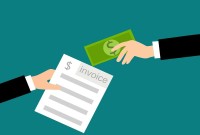- Home
- Business Processes
- Industry Knowledge
- Aerospace Industry
- Automotive Industry
- Banking Domain
- BFSI Industry
- Consumer/ FMCG Industry
- Chemicals Industry
- Engineering & Construction
- Energy Industry
- Education Domain
- Finance Domain
- Hospitality Domain
- Healthcare Industry
- Insurance Domain
- Retail Industry
- Travel and Tourism Domain
- Telecom Industry
- Leadership Skills
- eLearning
- Home
- Functional
- Procure to Pay
- Accounts Payable System
Accounts Payable System
We need a strong payables process so that it provides us with a high-productivity accounting solution to process vendor payments. An integrated payables process provides strong financial control so you can prevent duplicate payments, pay for only the goods and services you order and receive, and maximize supplier discounts. Understand the key features of an effective accounts payable system.
Given below are the key requirements from any automated world class accounts payable system:
Flexibility:
Payables system should provide flexibility for managing and streamlining invoice and payment processing. The flexibility is required in the areas of account structure, multiple calendars, multiple currencies, multiple bank accounts, multiple payment terms and how the system helps entering the information by defaulting linked information from the master data.
Accurate Invoice Processing:
Payables system should provide controls and automations to improve the efficiency of invoice processing and simultaneously help ensuring the accuracy of payables information. Some automation features or best practices are automatically matching an invoice to a purchase order by providing the purchase order number. Defaulting the accounting details and other information based on the matched purchase order.
Invoice Approvals:
As controllership and sox requirement the payable system should support two-, three- and four-way matching of purchase orders, invoices, receipts, and requester acceptance documents. Further it should provide approval mechanisms to ensure segregation of duties.
Multiple Payment Types:
System should provide capability to handle every form of payment, including manual payments, wire transfers, bank drafts, electronic funds transfers, and automatic checks. Further these payments should automatically or manually reconcile with the bank statements.
Supplier Interface:
System should enable resolve business issues quickly by providing immediate and accurate responses to supplier inquiries. Ability to view Invoice and Payment status information together to take informed decisions and have a meaningful conversation with the supplier.
Additional Information:
Ability to record detailed information about suppliers, including their purchasing, payment, and invoice processing preferences, flexible address formatting for global operations.
Electronic Data Interchange (EDI):
This allows exchanging payables data with external parties like banks and suppliers. Ability to use EDI drastically reduces many manual steps.
Pay on Receipt:
This is a financials feature that automatically creates supplier invoices based on receipts and purchase orders information. An advanced feature will automatically create matched invoices, automatically approve invoices and then make EDI or other electronic payments to the supplier.
Open Interfaces:
Ability to bring procure to pay data from other systems to the payables system.
Related Links
You May Also Like
-
Transport operations are often divided into full load and part load and due to economies of scale, the unit costs are higher for part loads. Our customer needs several part loads delivering, so it can reduce costs by consolidating these into full loads. Then it gets all the part loads delivered to a warehouse near the suppliers, consolidates them into full loads, and pays the lower costs of full-load transport to its operations.
-
Inventory is money, and hence businesses need to perform physical inventory counts periodically to make sure that their inventory records are accurate. The traditional approach to conducting inventory counts is to shut down a facility during a slow time of year to count everything, one item at a time. This process is slow, expensive, and (unfortunately) not very accurate.
-
This article discusses the documents that gets generated during the procure to pay process. Undestand why these documents are created, what is their business significance and how they are handled and generated using ERP or automated systems.
-
This article discusses the key documents that gets generated during the import/export process. These documents may apply to both invoice to cash as well as order to cash cycles. Also learn the major custom docments for India.
-
Understand what we mean by accounts payable. Why the process is called accounts payable and what are the other names by which this process is known as. Download a ready recokner to keep with you.
-
Accounts Payable Journal Entry
Although in the large organizations the Procure to Pay Accounting process starts when the purchase order for supply of goods is released to the supplier. To keep things simple in the beginning we will discuss the core accounting entries related to the Accounts Payables process.
-
One of the warehousing best practices that retailers like Walmart, Amazon, and Target have adopted is known as cross-docking. During this process the inbound products are unloaded at a distribution center and then sorted by destination, and eventually reloaded onto outbound trucks. In real parlance, the goods are not at all warehoused but just moved across the dock (hence the name).
-
Overview of Third-Party Logistics
Third-party logistics (abbreviated as 3PL, or TPL) is an organization's use of third-party businesses to outsource elements of its distribution, warehousing, and fulfillment services. A third-party logistics provider (3PL) is an asset-based or non-asset based company that manages one or more logistics processes or operations (typically, transportation or warehousing) for another company.
-
The Outbound process starts with routing the shipments. The Outbound execution process starts from the point when pick tasks are completed for an outbound shipment and ends at the point where the outbound packages are loaded into trailers. The Warehouse Outbound process includes managing and controlling outgoing materials starting from the download of orders through to the shipping of products from the warehouse.
-
Resource Planning is the process of planning for expected workload and determining the number of resources required to complete each activity in the warehouse. There are many types of warehouse positions, and they also vary by the employer, the scale of operations and location. Discussed here are generic positions applicable to warehouse management processes.
Explore Our Free Training Articles or
Sign Up to Start With Our eLearning Courses

About Us
Learning
© 2023 TechnoFunc, All Rights Reserved










